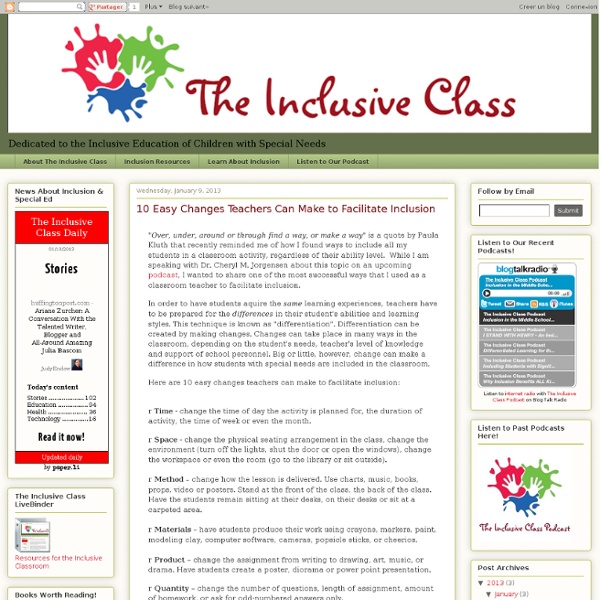The Inclusive Class: 10 Easy Changes Teachers Can Make to Facilitate Inclusion

The Inclusive Class: Top 10 Websites for the Inclusive Classroom
Teachers love a great resource! Especially a resource that is free and at their fingertips - literally. That's why I put together a list of 10 outstanding websites that teachers can use in the inclusive classroom (or any classroom, for that matter!). It was difficult to narrow the list down to 10, given all the websites that are available on the internet! Do you have any to add to this list?
'Auti-Sim' Game Simulates Life With Childhood Autism
In a playground filled with gleeful shouts, you approach a group of children. Suddenly, your vision turns blurry and pixelated. The echoing screams become raucous. It's the experience of sensory overload, according to a new game called Auti-Sim. The closer you get to loud and active children, the more overwhelming the situation becomes. Taylan Kadayifcioglu (who goes by Taylan Kay), one of the game's programmers, says he was inspired by an excerpt from a documentary called Inside Autism. "It was striking how an ordinary, everyday environment could pose significant challenges," Kay tells Mashable. "It was striking how an ordinary, everyday environment could pose significant challenges," Kay tells Mashable. After posting the demo on indie game site Game Jolt, Auti-Sim received generally positive feedback. "We have had quite a few people with autism thanking us for giving them a means of communicating what they are going through," Kay says. Screenshot courtesy of YouTube, Taylan Kay
The Inclusive Class: 25 Easy Ways to Improve Executive Functioning Skills
How do we help our children or students who are perpetually losing things, often running late and seem completely disorganized? Do we reprimand them for being lazy? Do we keep them in at recess because they forgot to do their homework? Or, do we wonder if there is a reason as to why this child just can't seem to pull things together? Teachers and parents often spend an inordinate amount of time supporting children with weak executive function skills. However, in a carefully planned and organized school day, there are 25 easy ways for teachers and parents to help strengthen weak executive functioning skills in kids: 1. 2. 3. 4. 5. 6. 7. 8. 9. 10. 11. 12. 13. 14. 15. 16. 17. 18. 19. 20. 21. 22. 23. 24. 25.
Related:
Related:



